Over the last week, as part of a tour I’ve been leading through gardens in Scotland and the north of England, I’ve been fortunate enough to see four earth works created by Charles Jencks. Jencks is an American architectural theorist, writer and landscape architect who has lived in Scotland for many years and now divides his time between lecturing, writing, and designing in the USA, the UK, and Europe.
There are similarities between the four projects I saw, but each is based on an idea derived from contemporary science. And while the practice of mounding and shaping the earth is not a new one — think of the burial mounds found in many countries or Tudor mounts meant for viewing a garden or spiral paths winding towards defensive walls — Jencks has given ancient mounds a contemporary twist.
And when I say twist, I mean it literally. Outside the Edinburgh Gallery of Modern Art, twisting forms shaped like the letter S transform a flat lawn into a work of art.
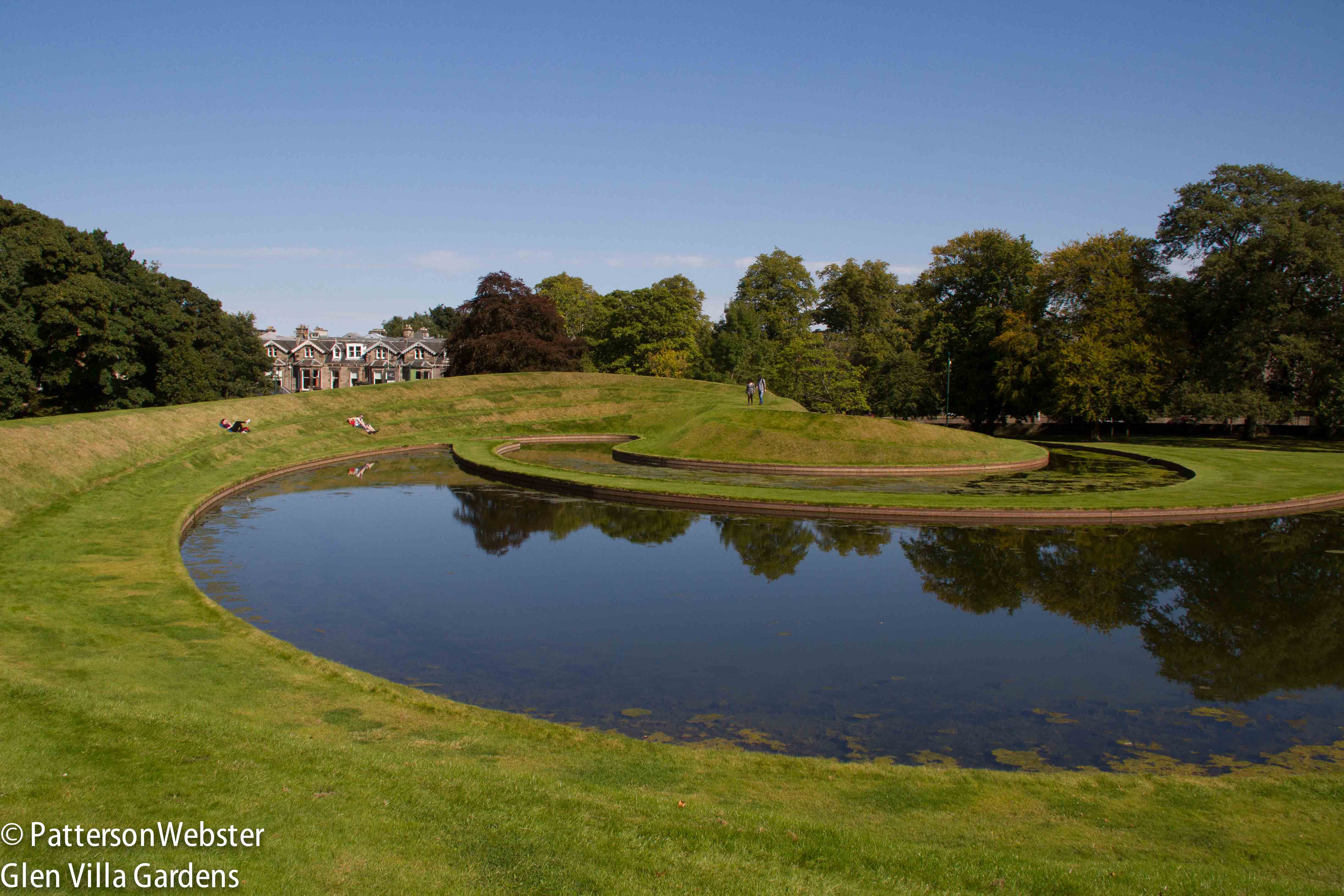
Ueda Landform is derived from chaos theory and ideas about chaotic attractors. The mounds are named after a French and a Japanese scientist who worked on the theory.
The banks of earth provide comfortable resting places for visitors, particularly on a sunny day. The adjoining pools are glorious to look at, despite the algae that interferes with the clarity of the water.
Brushed aluminum notches the earth as you descend the spiral path that leads around the pools and up the mounds. Reflected in the water, these panels resemble the ribs of a boat, or the ribs of a human or animal, or ripples in the water itself.
The twists, turns and curves take scientific ideas out of the mind and plant them more literally in and on the earth. At Jupiter Artland, an art park and educational foundation near Edinburgh, the Cells of Life uses the same combination of water and mounded earth to investigate the life of the cell, the basic unit of life. Enormous landforms surround pools divided by grassy paths, making it seem as if the earth itself is replicating the division of a cell, from one to two to many.
The beauty of these land forms comes through the subtle variations in the spiralling paths, how they meet and divide, whether at ground level …
… or as they ascend.
The marvellous curves are mirrored, almost shockingly, by a red iron bridge that shakes up a scene that could otherwise be too serene.
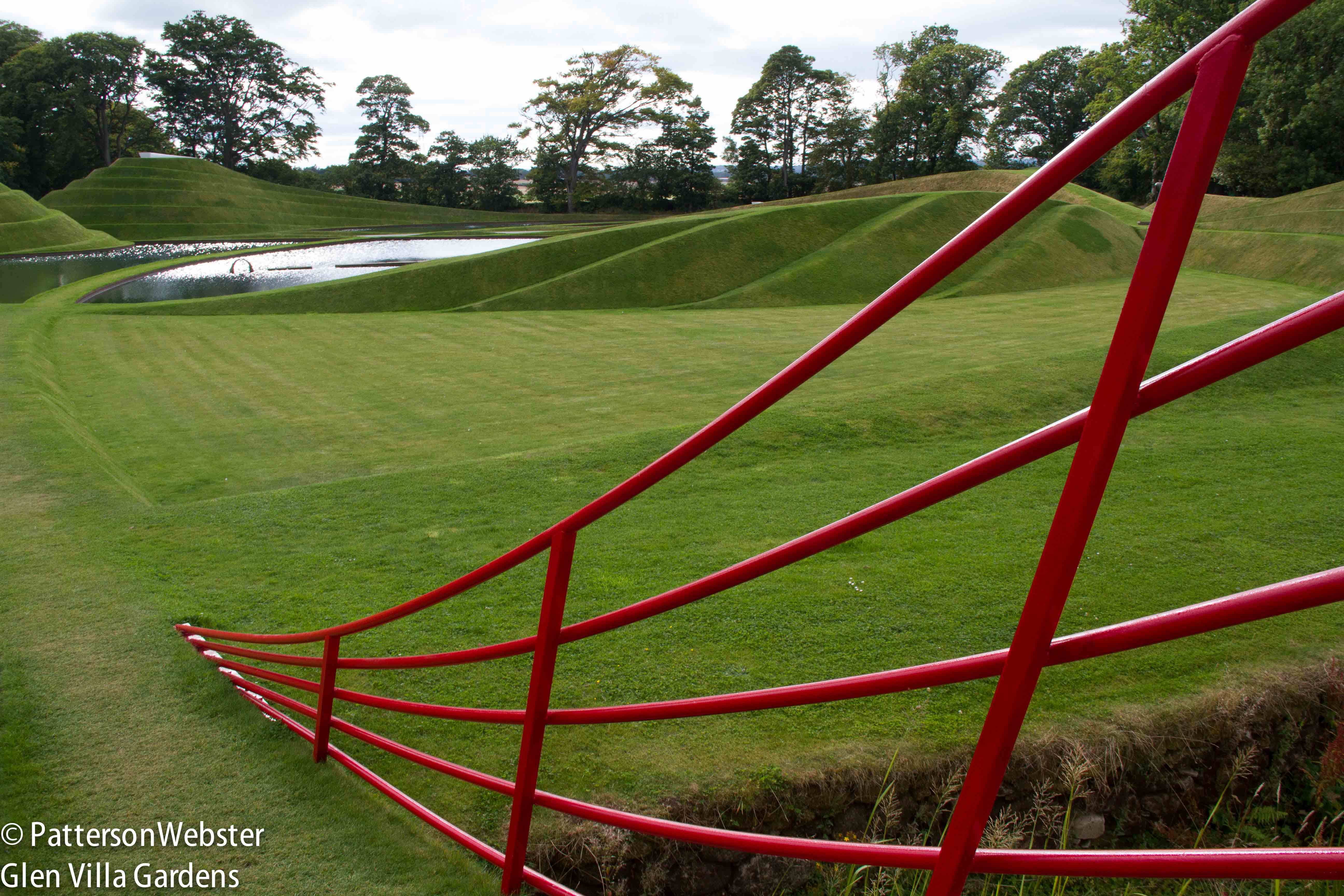
Some of the group touring this site loved the red bridge, others found the colour jarring. What do you think?
Jencks’s first foray into land forming was at his home, Portrack House. There, in the Garden of Cosmic Speculation, a snail mound rises majestically above the water. Designed by Jencks’s wife, the late Maggie Keswick, the mound was based initially on ideas from Chinese garden design. As the path ascends, each spiral becomes shorter, and to my eye this gives the mound an elegance that surpasses that of the Cells of Life.
The extraordinary finesse of these curving mounds is shown as well in the clear pools of water beside them.
There is so much to say about each of these places that today’s post is only an overview. After some time for reflection, I hope to return to the subject. I can’t end, however, without showing you some photos of Charles Jencks’s most recent project. Called the Crowick Multiverse, it is both a continuation of a theme and a departure from it.
Created on the site of a former coal mine, the Multiverse is many things: an artwork, a land reclamation and a job creation project. It uses boulders found on the site — some 2000 of them — to present celestial features and ideas about colliding and dividing universes and galaxies. A boulder-lined pathway bisects the 50 acre site, creating a processional route that is reminiscent of the avenues that once approached Stonehenge and other ancient stone circles.

The ceremonial way runs through the middle of the Sun Amphitheatre. Designed for public spectacles, it can hold up to 5000 people. Since I was there as part of a group of 14, plus a piper from the local school, the place felt quite empty.
Boulders outlining paths are a departure from Jencks’s previous landform works. On the mound shown below, they are very effective, creating a powerful sense of mystery.
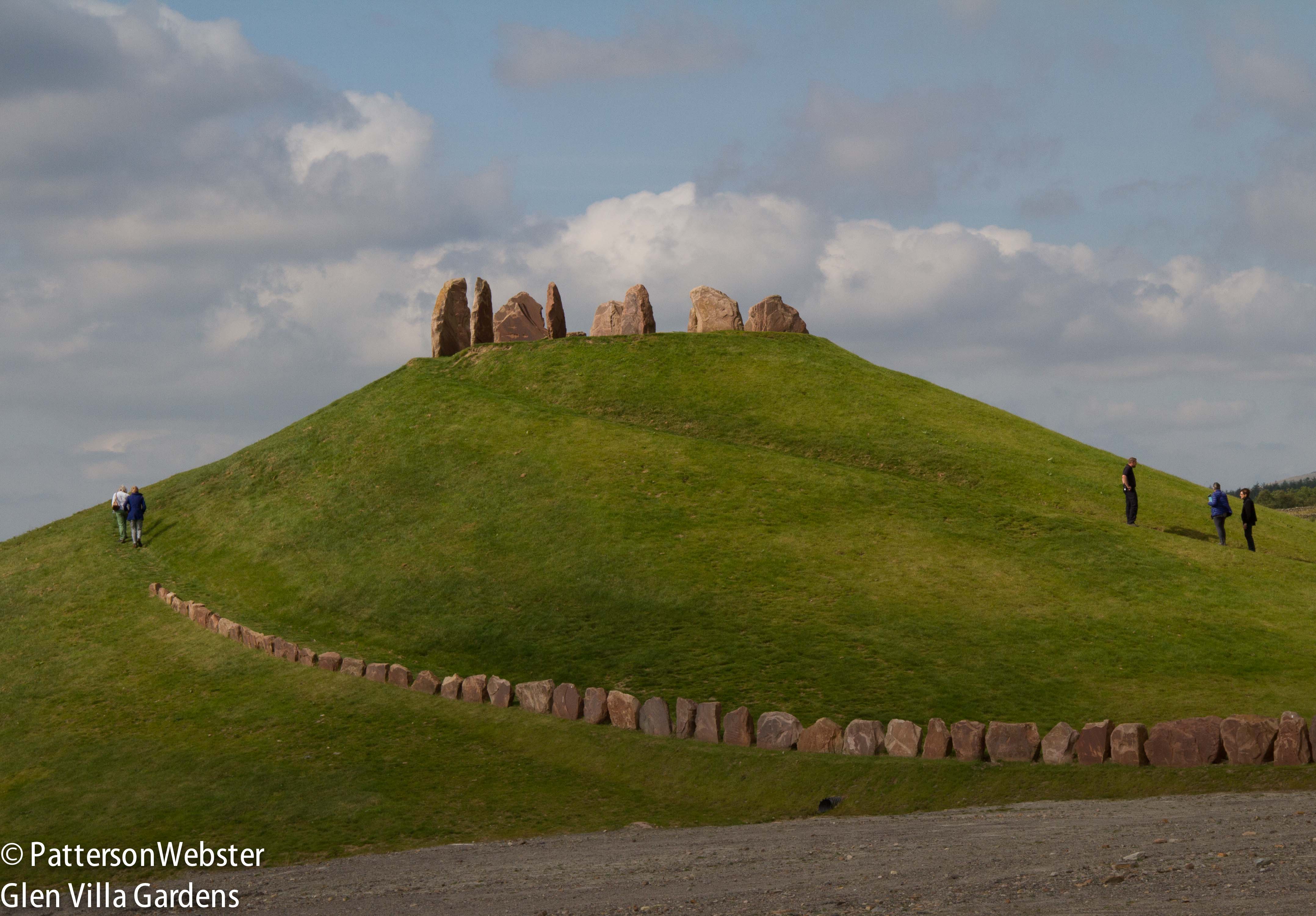
Each mound is named for a celestial feature. This is the Andromeda Galaxy. People walking the paths give an indication of the size of the mounds.
In other areas, the boulders are not as effective.
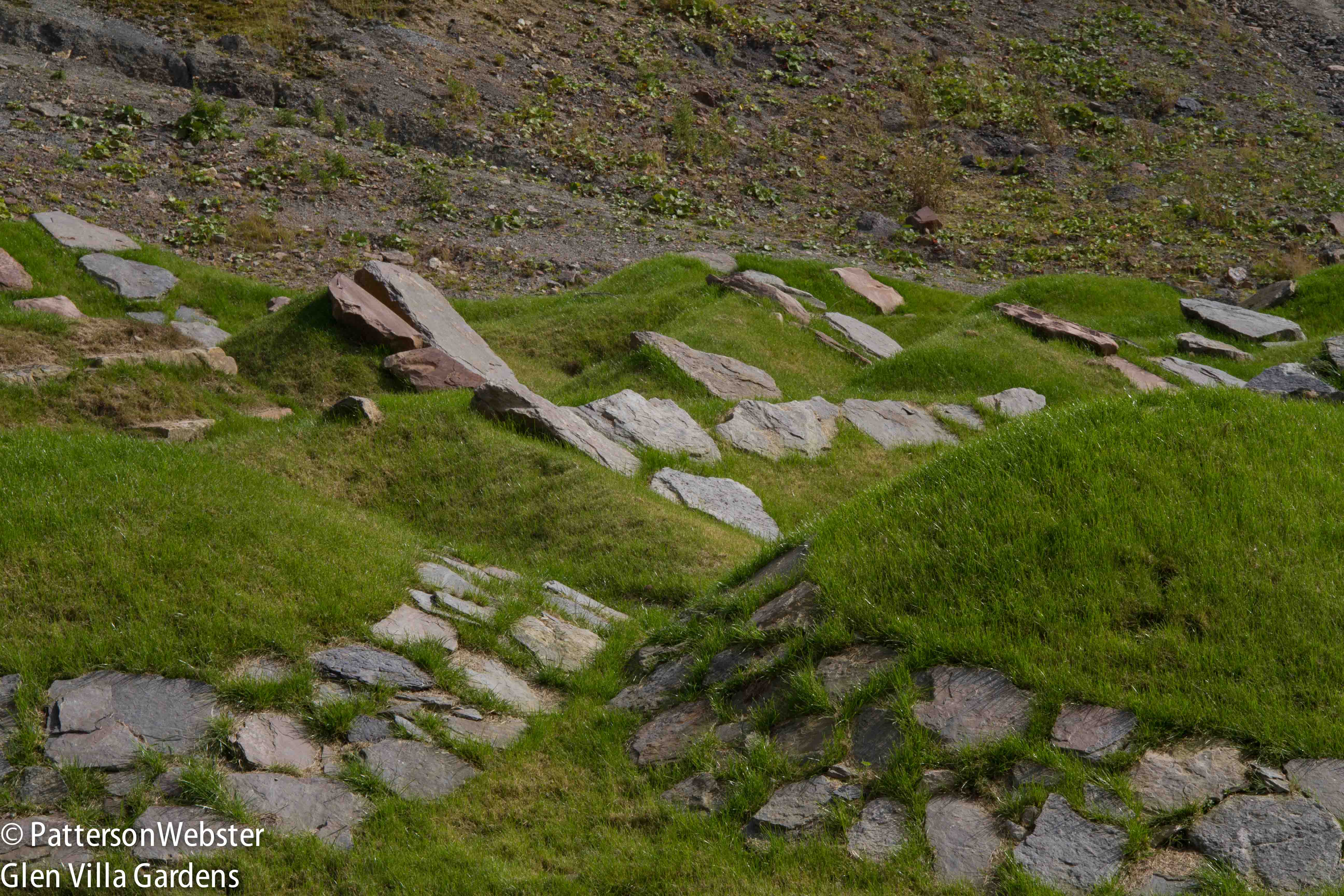
A small mound had stones laid both at random and in patterns to suggest the supercluster, a large collection of stars.
It is early days to judge the success of the Crowick Multiverse. Opened to the public in July 2015, less than two months ago, it feels incomplete. In the immense spaces, it needs people to give it life, and so far, the people aren’t there.
In the vast space of this former mine, representing the expanse of the cosmos may be an appropriate comparison, but the signage identifying the mounds makes it feel overly didactic — and I’m one who likes to read signs. I can see and appreciate the mounds of Landform Ueda without understanding chaotic attractors. My appreciation may be deepened when I know the ideas that guided their construction, but I can enjoy the sinuous curves in the Garden of Cosmic Speculation and at Jupiter Artland without reference to anything beyond them. I don’t need names or labels.
I hope the Crowick Multiverse succeeds. The scale of the project is overwhelming, and a single visit isn’t sufficient to form a well-grounded opinion. And since I find the aims of the project admirable, I’m withholding judgement. But my initial visit left me untouched.
Even so, the Multiverse is worth a visit, and I’d go back in a flash to wander the site, if only for the views out to the countryside beyond. Because there, lurking in the distance, are mounds of another sort — remnants of the industry that made the land reclamation necessary. Noting this irony was well worth the tiny price of admission.


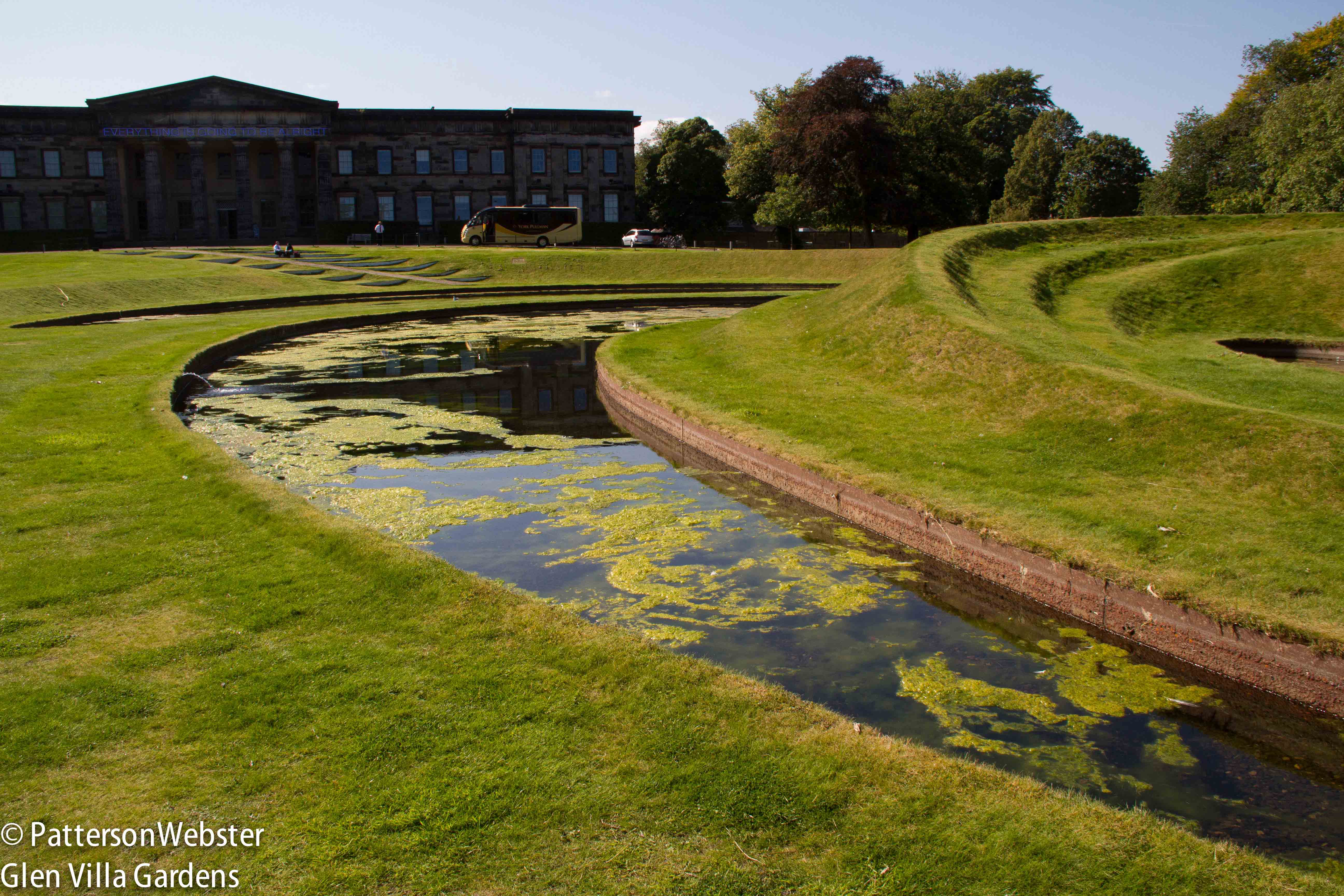
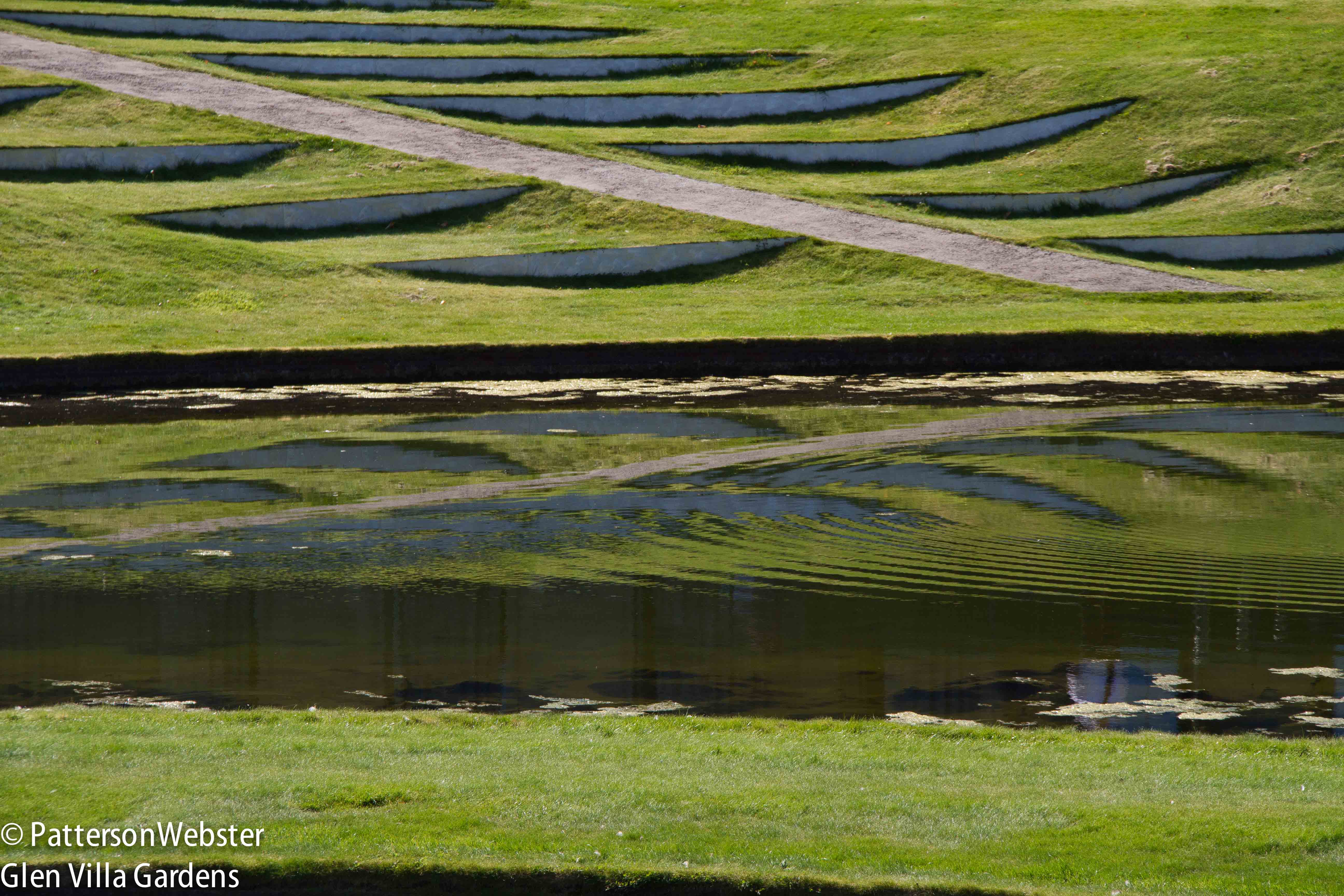
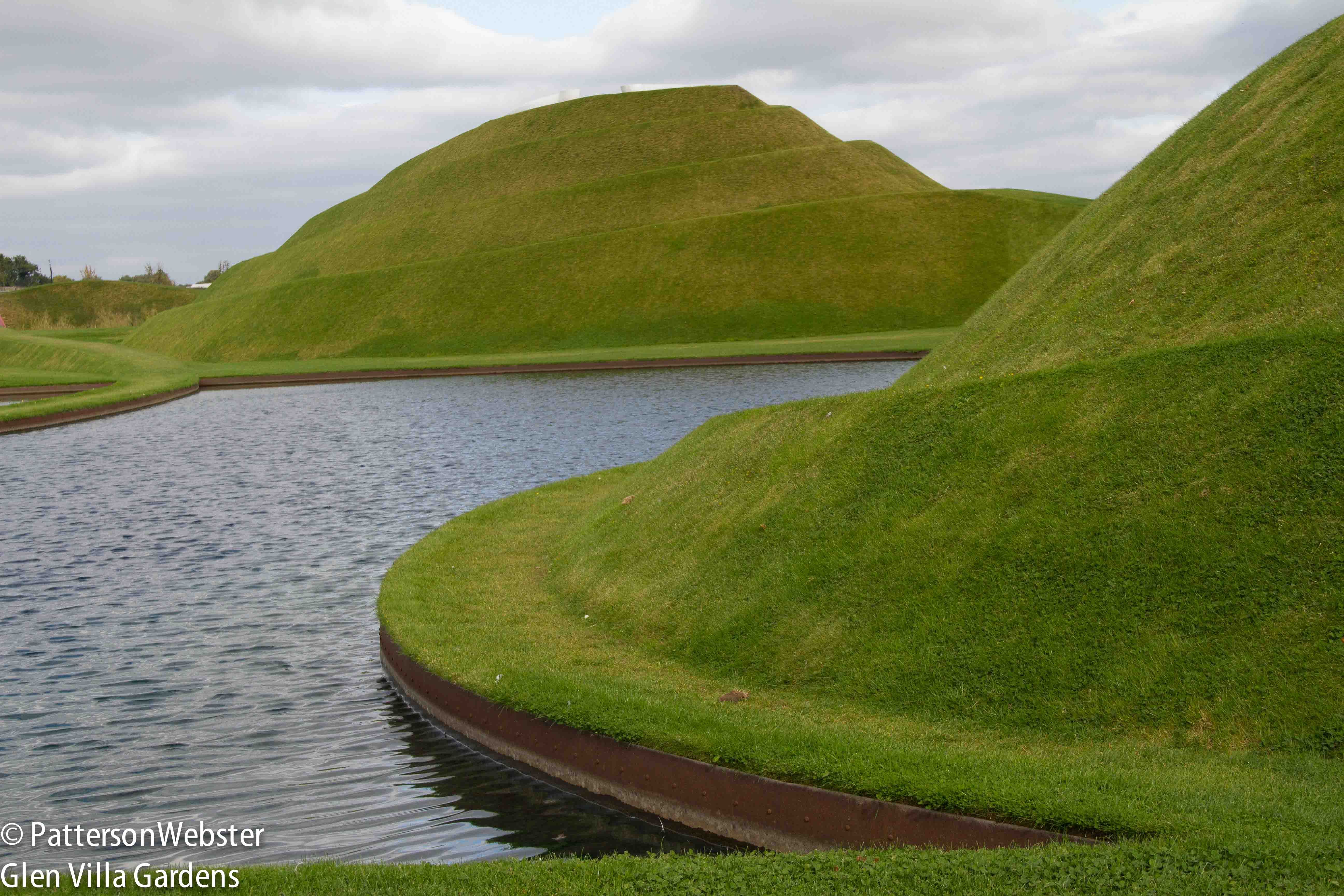
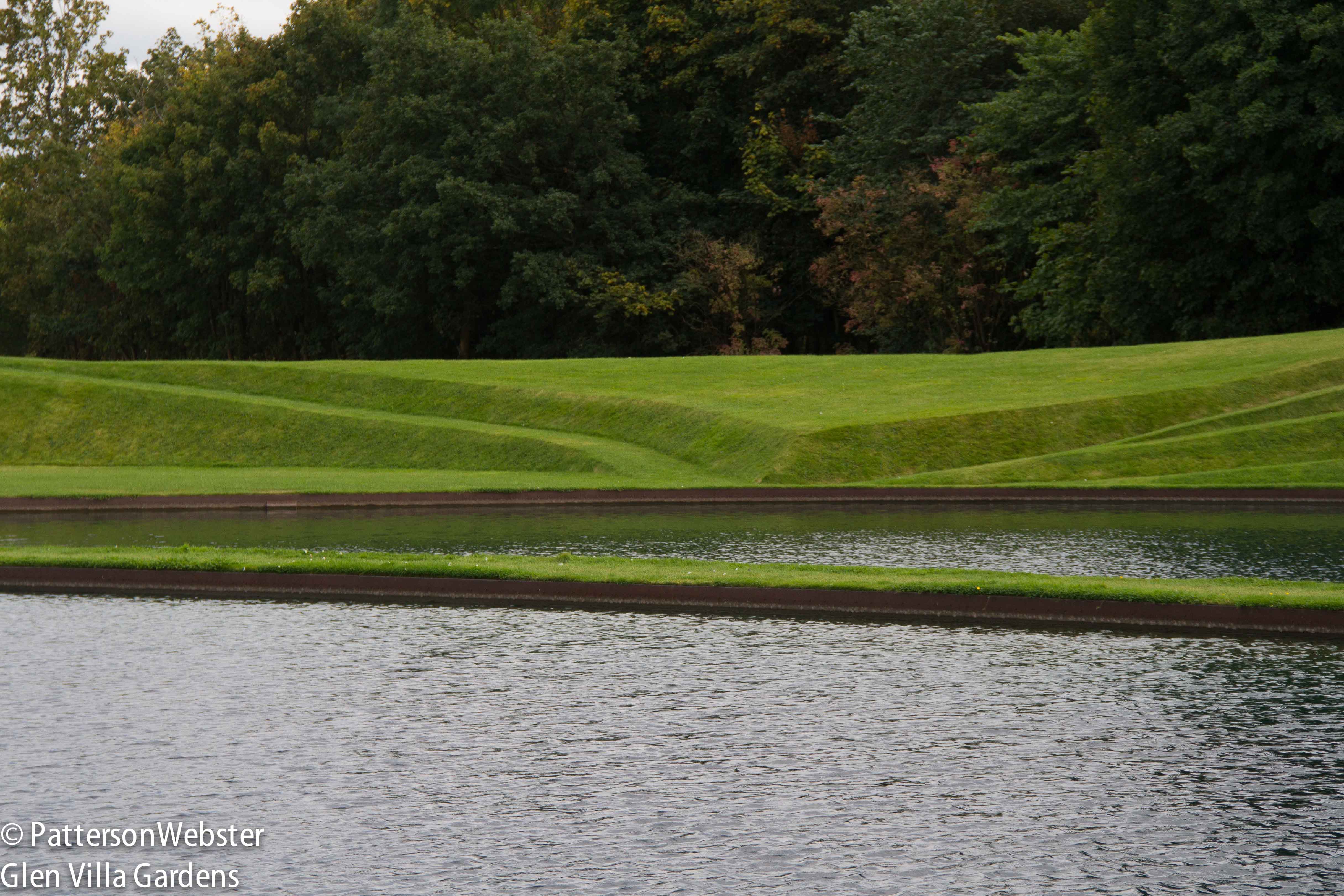
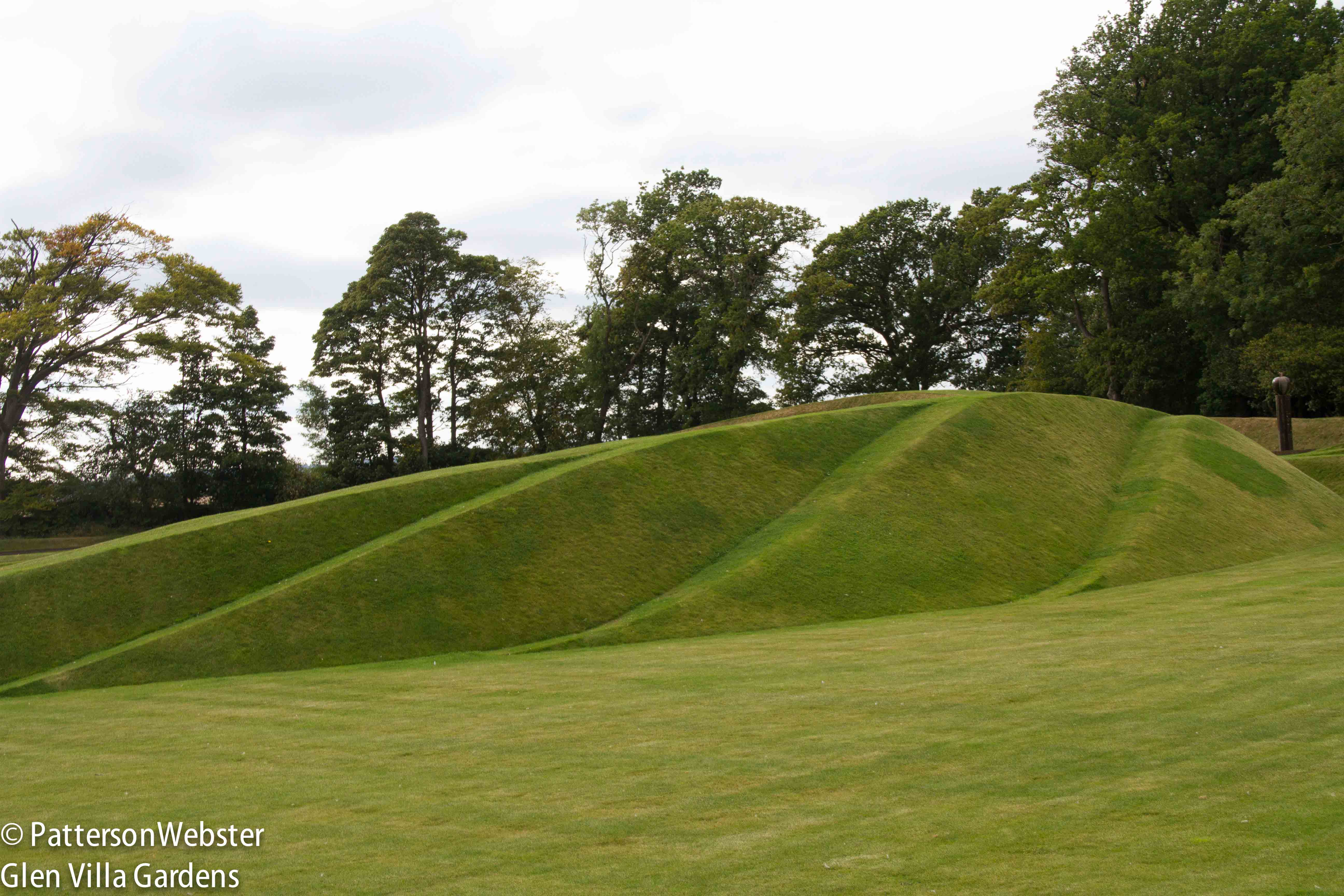
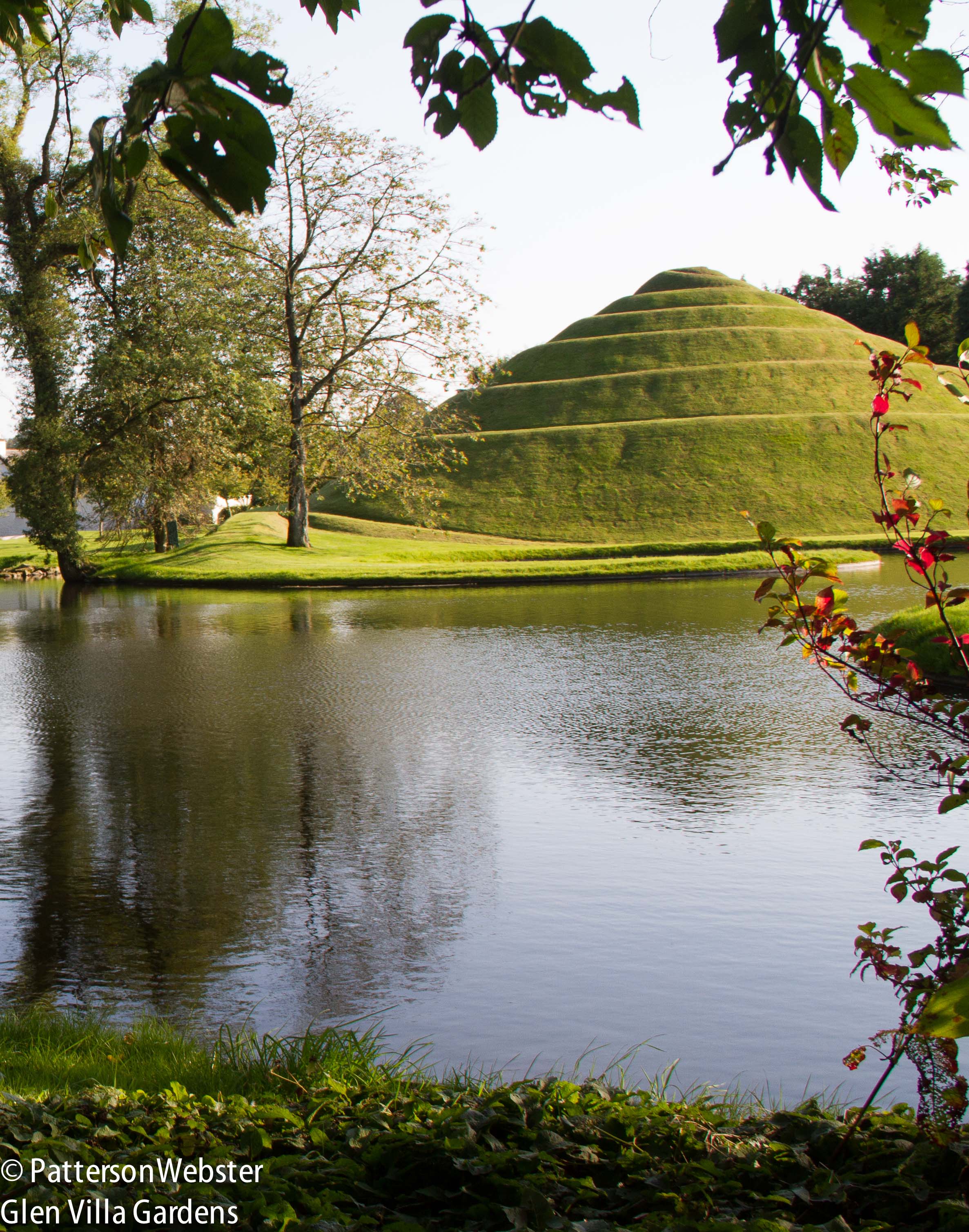
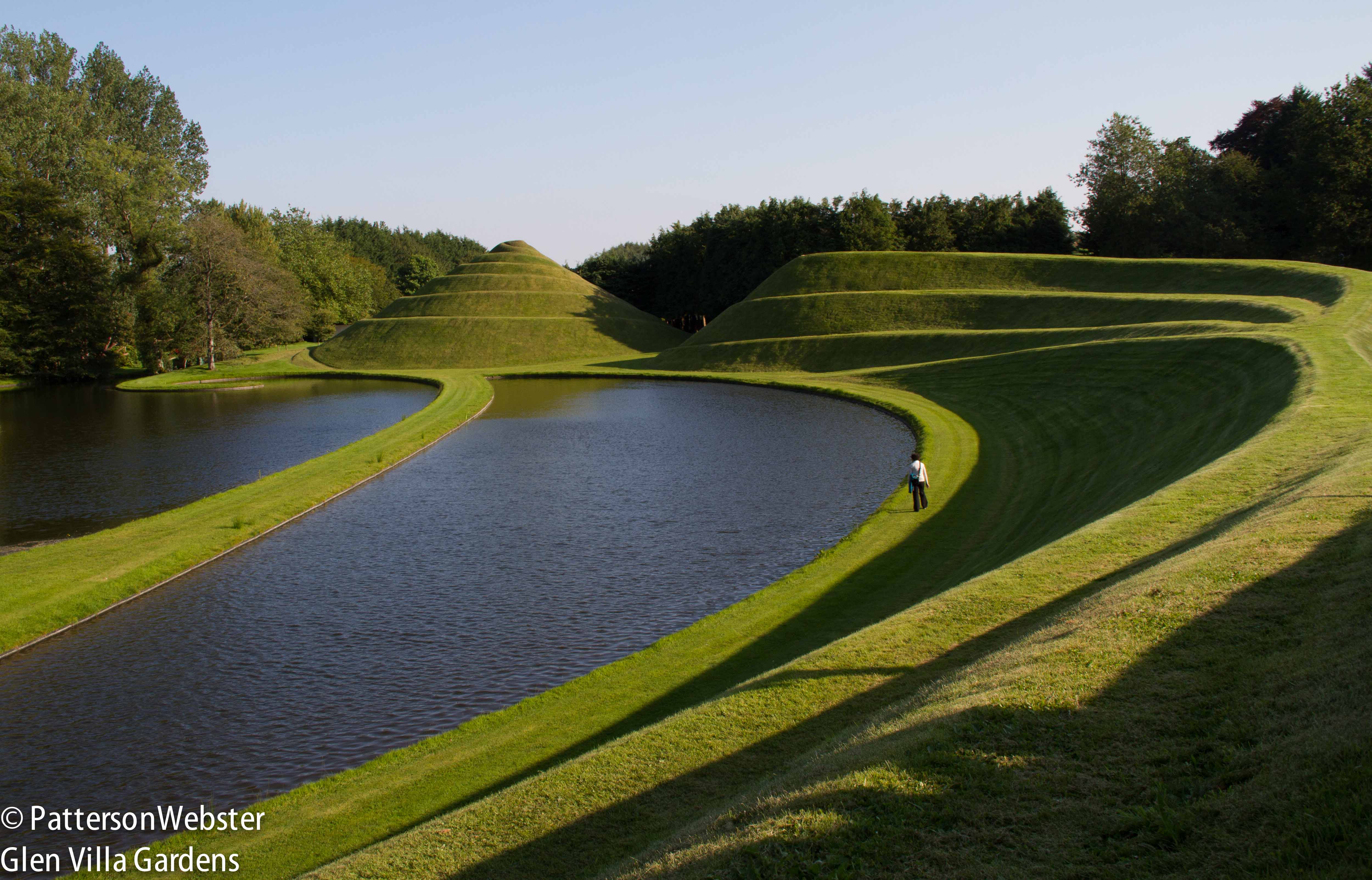






All quite stunning!
Indeed, they were stunning, Robert. More so than any photo can convey.
I particularly like the snail mound, it makes me think of an ancient temple like a ziggurat. There is something a little bleak, though, about such a vast carpet of grass.
I also thought of ziggurats and similar mounds. Your comment about the grass is interesting. In the photo, it does looks vast but this is more a result of the angle of the photo than anything else. In the context, the balance of water, grass, mound, surrounding vegetation felt good to me. So, yet another example of how photos can distort a scene, and perceptions of it
Pat, I like the photos of the Garden of Cosmic Speculation and these other earthworks, but I’m put off by the didacticism. I also feel the didactic messages don’t work. Such ideas can’t really be communicated by the earthworks. At best, they may spark interest in the viewer, who will then have to learn the concepts being communicated in some other way. I’m a fan of physics and astrophysics, but that doesn’t make these work for me. Nevertheless, I’d like to visit them just to see them as mysterious forms in the landscape. And I should add I like the red bridge.
The Multiverse is heavy with ideas — overly so, I think. The ideas themselves are so complex that I doubt they will spark interest in most viewers. Certainly they didn’t spark it in me: I felt, and feel, no desire to investigate. The scale of the place is the primary feature now, and that isn’t enough to win me over.
My response to Jencks’s other sites was more positive, but mine was an aesthetic response rather than one based on the ideas laid out in and on the land. The landforms were gorgeous, from everyone angle. Some aspects of the Artland project were not successful (I omitted photos of those parts…) and I think they fell short because of their didacticism.
I also loved the red bridge at Jupiter Artland and the red bridges at Cosmic Speculation. Previously the one at Jupiter Artland was silver=grey and some of the group thought they would prefer that colour. The swoop of the shape and the intensity of the colour contrast worked really well.
How in the world are they mowed, I wonder? Some of those landforms have steep sides. Pam/Digging: http://www.penick.net/digging
They do have steep sides, Pam. The flat parts of the spirals are wide enough for a lawn mower; I’m guessing that the sides are cut with a whipper-snapper. It’s a question I plan to ask when I return next September with another group. Interested in joining?